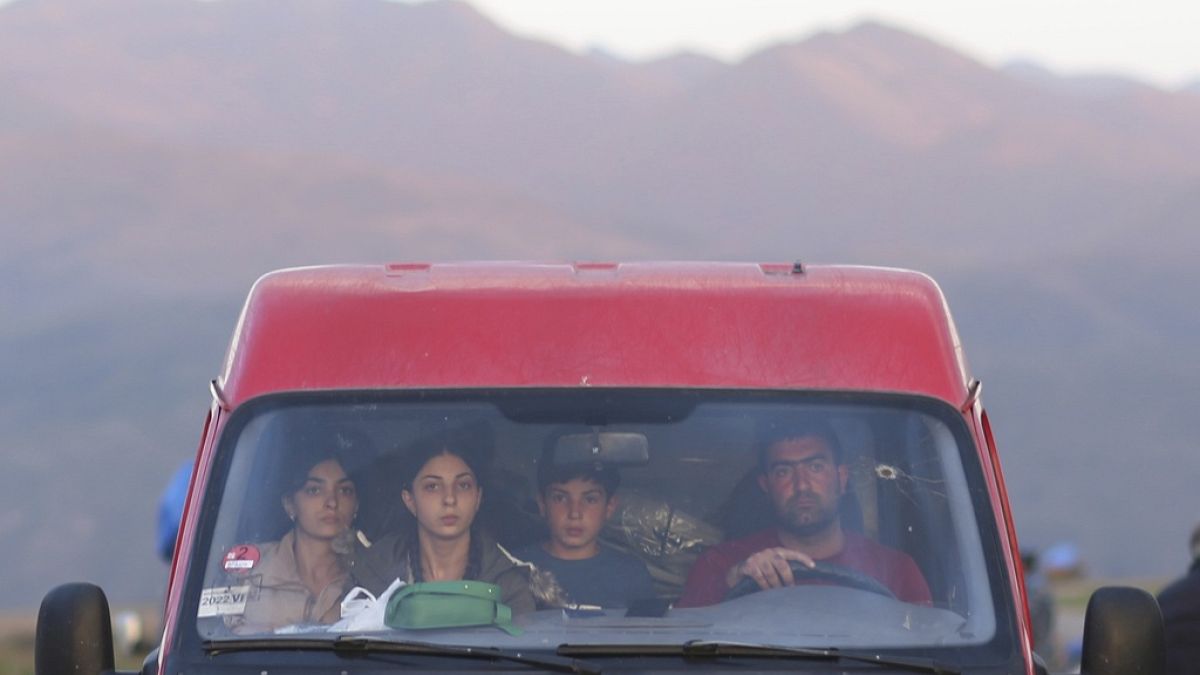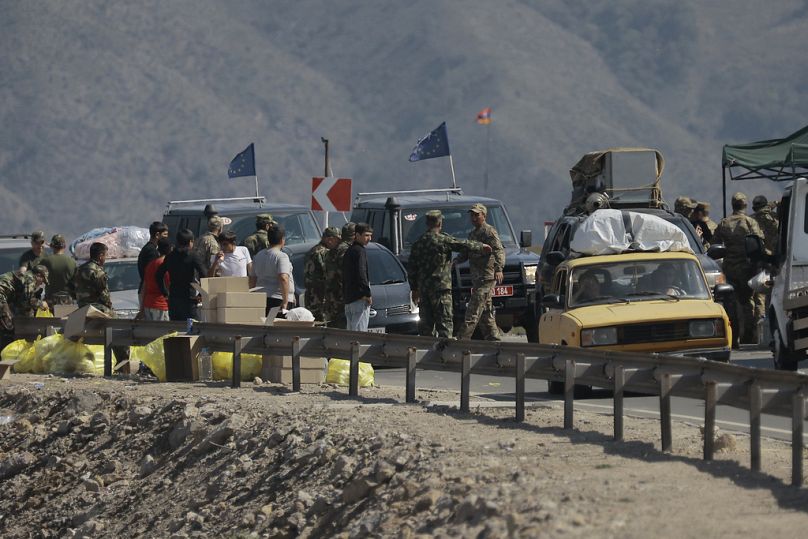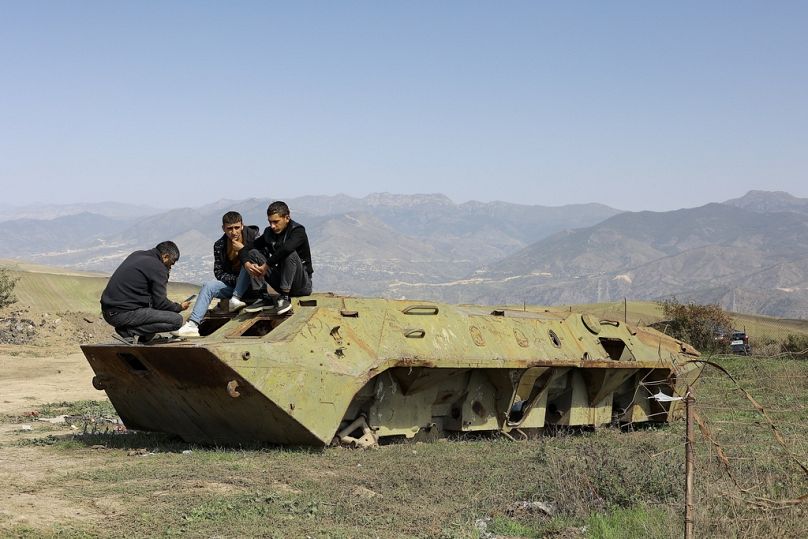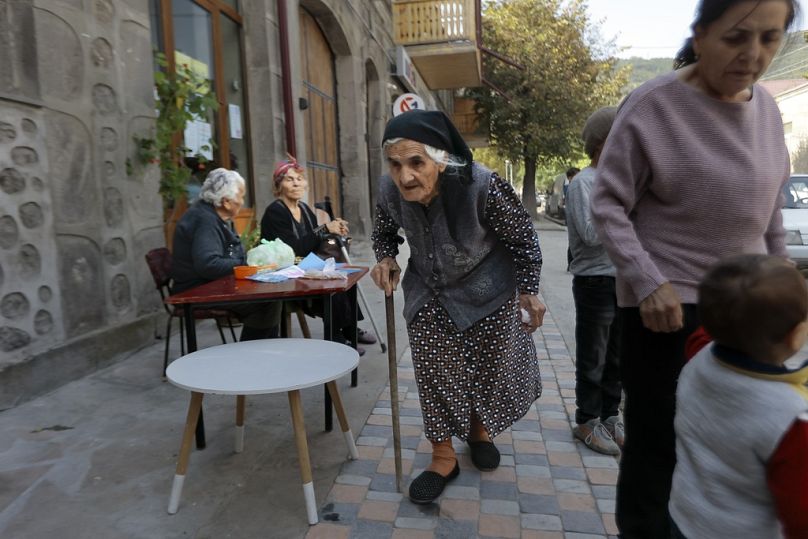More than 70% of the population of Nagorno-Karabakh has fled the ethnic Armenian enclave in Azerbaijan for neighbouring Armenia, the Armenian government said Friday, as the enclave's separatist government said it will dissolve itself by the end of the year after a three-decade bid for independence.
Armenian officials said that 84,770 people had left Nagorno-Karabakh by Friday morning out of a total population of around 120,000.
The mass exodus that began Sunday raises questions about Azerbaijan’s plans for Nagorno-Karabakh following its lightning offensive last week to reclaim the breakaway region, and demand that its militants disarm and its separatist government disband.
Some people have lined up for days to get out of Nagorno-Karabakh as the only road to Armenia quickly filled up with vehicles, creating a major traffic jam on the winding mountain road.
Armenian Health Minister Anahit Avanesyan said that some people, including the elderly, had died while on the road to Armenia, because they were “exhausted due to malnutrition, left without even taking medicine with them, and were on the road for more than 40 hours.”
On Thursday, Armenian Prime Minister Nikol Pashinyan noted the departure of ethnic Armenians from Nagorno-Karabakh and alleged it was “a direct act of an ethnic cleansing and depriving people of their motherland.” Azerbaijan’s Foreign Ministry strongly rejected Pashinyan’s accusations, calling the departure of Armenians “their personal and individual decision and has nothing to do with forced relocation.”
Laurence Broers, an expert on the Caucasus with London-based think tank Chatham House, said that it was unlikely that significant numbers of Armenians will remain in Nagorno-Karabakh and that “the territory will become homogenous.”
“If you define ethnic cleansing as actions by force or through intimidation to induce a population to leave, that’s very much what the last year or so has looked like,” he said.
In the 1990s, the Azerbaijani population was itself expelled from Nagorno-Karabakh and hundreds of thousands of people were displaced within Azerbaijan. As part of its “Great Return” program, the government in Baku has already relocated Azerbaijanis to territories recaptured from Nagorno-Karabakh forces in a 2020 war.
Analysts believe Azerbaijan could expand the program and resettle Nagorno-Karabakh with Azerbaijanis, while stating that ethnic Armenians could stay or exercise a right to return in order to “refute accusations that Karabakh Armenians have been ethnically cleansed,” Broers said.
A decree signed by the region’s separatist president, Samvel Shakhramanyan, cited a Sept. 20 agreement to end the fighting under which Azerbaijan will allow the “free, voluntary and unhindered movement” of Nagorno-Karabakh’s residents to Armenia.
On Monday night, a fuel reservoir exploded at a gas station where people lined up for gas to fill up their vehicles to flee to Armenia. At least 68 people were killed and nearly 300 others were injured, with more than 100 others still considered missing after the blast, which exacerbated fuel shortages that were already dire after the blockade.
On Friday the State Emergency Service of Nagorno-Karabakh's interior ministry said 170 remains and body fragments had been collected and would be sent to Armenia for DNA identification.
Avanesyan, the Armenian health minister, said that 142 people who were injured after the fuel tank exploded were taken to Armenia for treatment and that some of them were in very serious condition.
On Thursday, Azerbaijani authorities charged Ruben Vardanyan, the former head of Nagorno-Karabakh’s separatist government, with financing terrorism, creating illegal armed formations and illegally crossing a state border. He was detained on Wednesday by Azerbaijani border guards as he was trying to leave Nagorno-Karabakh for Armenia along with tens of thousands of others.
Vardanyan, a billionaire who made his fortune in Russia, was placed in pretrial detention for at least four months and faces up to 14 years in prison. His arrest appeared to indicate Azerbaijan’s intent to quickly enforce its grip on the region.
Another top separatist figure, Nagorno-Karabakh’s former foreign minister and now presidential adviser David Babayan, said Thursday that he would surrender to Azerbaijani authorities who ordered him to face an investigation in Baku.



